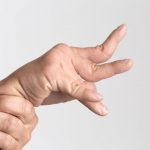 Stiff or rigid muscles with exaggerated, deep tendon. The condition can interfere with walking, movement, or speech.
Stiff or rigid muscles with exaggerated, deep tendon. The condition can interfere with walking, movement, or speech.
A marked hypertonicity or continual over-contraction of muscles, causing stiffness, awkwardness, and motor incoordination.
A condition in which a limb resists passive movement.
Spasticity, a type of muscle hyperactivity, is a disorder associated with a lesion of the central nervous system. Most commonly the lesion is in the sensorimotor area of the cerebral cortex or associated pathways. Spasticity is a diagnostic sign of an upper motor neuron syndrome such as cerebral palsy. It is defined as a velocity-dependent increase in muscle tone (hypertonia) with hyperactive deep tendon reflexes (DTRs). Clinically, spasticity is manifested by an increase in resistance to passive movement (i.e., muscle stiffness). Conversely, the presence of spasticity may impair voluntary motor control, thereby impacting specific functions such as gait, upper extremity tasks such as reaching, and self-help skills. Spasticity may be rated as mild, moderate, or severe. Prolonged spasticity may lead to muscle and joint contractures, bone deformities, and muscle atrophy.
A condition characterized by stiff or rigid muscles. In spasticity, certain muscles are continuously contracted. This can interfere with movement, gait, or speech. Spasticity is usually caused by damage to part of the brain or spinal cord that controls voluntary movement. Possible causes of damage include stroke, cerebral palsy, multiple sclerosis, and spinal cord or brain injury. Spasticity can manifest itself in a number of different ways. Symptoms include clonus (a series of rapid muscle contractions), hypertonicity (increased muscle tone), exaggerated deep tendon reflexes, fixed joints, muscle spasms, and scissoring (involuntary crossing of the legs). Treatment includes medication (such as baclofen, clonazepam, and diazepam) and physical therapy (for example, range-of-motion exercises and muscle stretching). In some cases, surgery is necessary. Injections of botulinum toxin type A (Botox) into the muscles can also relieve spasticity.
Resistance to the passive movement of a limb that is maximal at the beginning of the movement and gives way as more pressure is applied. It is a symptom of damage to the corticospinal tracts in the brain or spinal cord. It is usually accompanied by weakness in the affected limb.
A motor disorder characterized by velocity-dependent increased muscle tone, exaggerated tendon jerks, and clonus. Spasticity is the result of an upper motor neuron lesion (i.e., found in the spinal cord or brain rather than in one of the peripheral nerves).
An augmentation in muscular rigidity, or inflexibility, resulting in spontaneous and ungainly motions.
Elevated stiffness within a set of muscles, leading to constrained movement and inflexibility. This phenomenon is observed in conditions such as Parkinson’s disease, multiple sclerosis, cerebral palsy, and tetanus.
The state of having spasticity.
